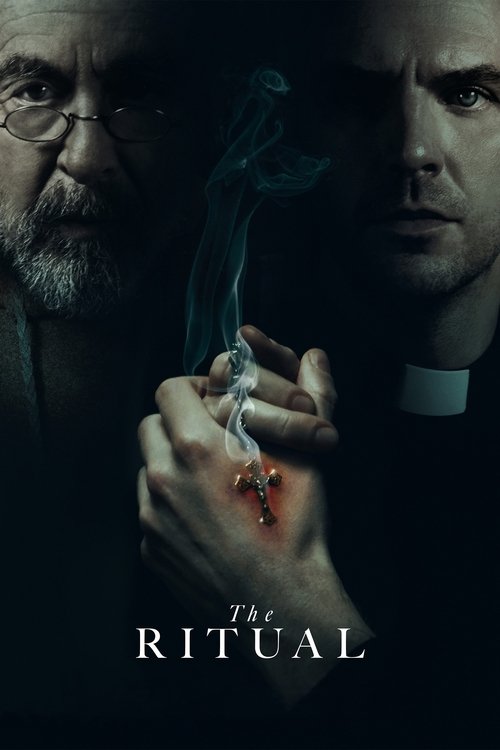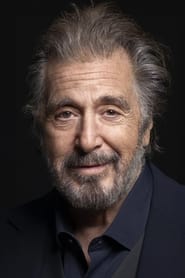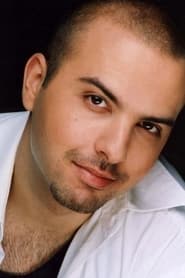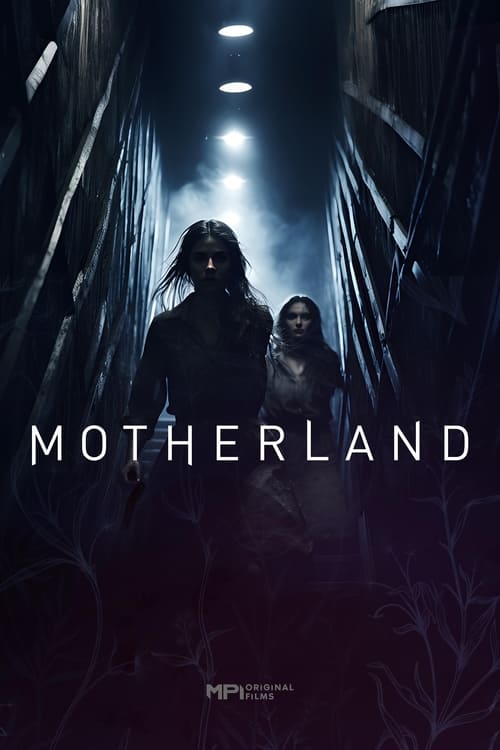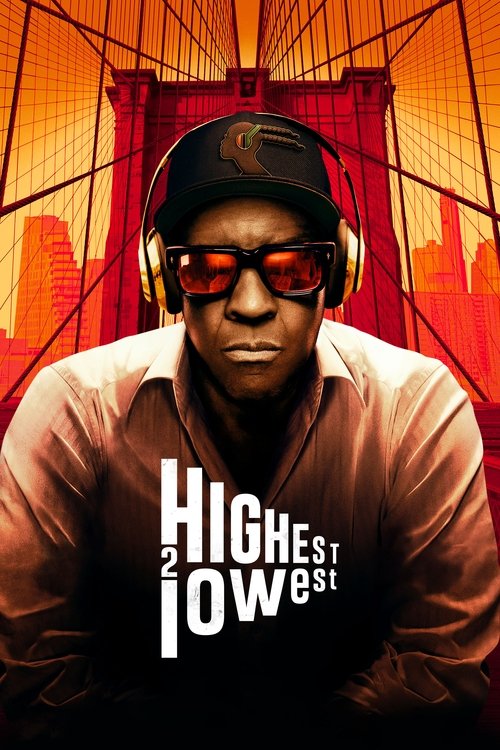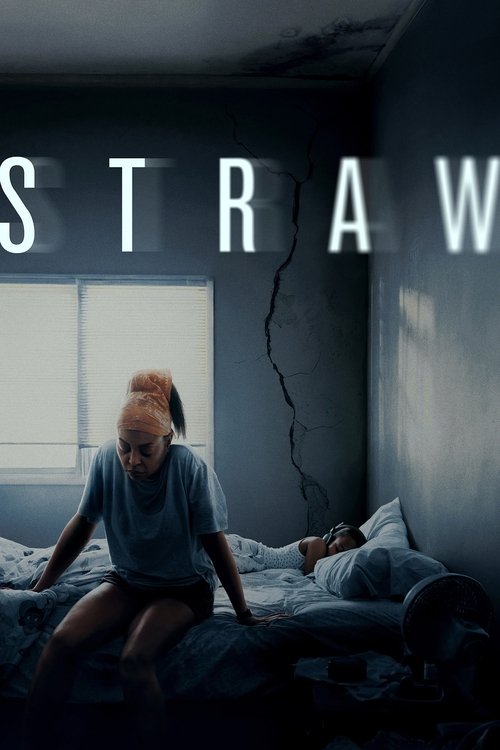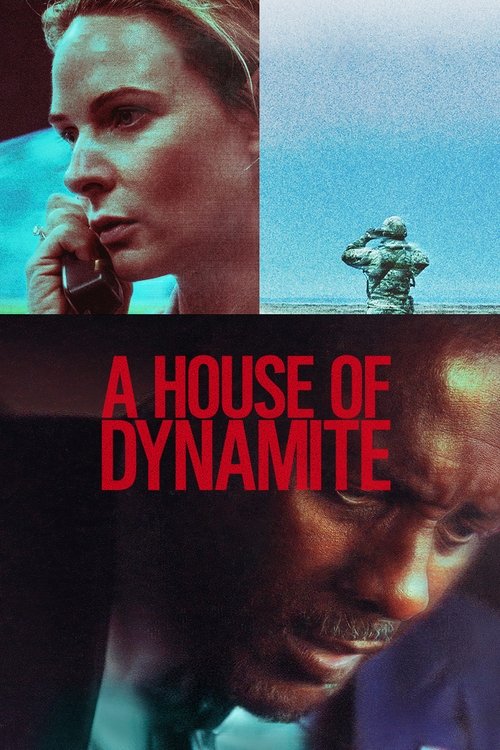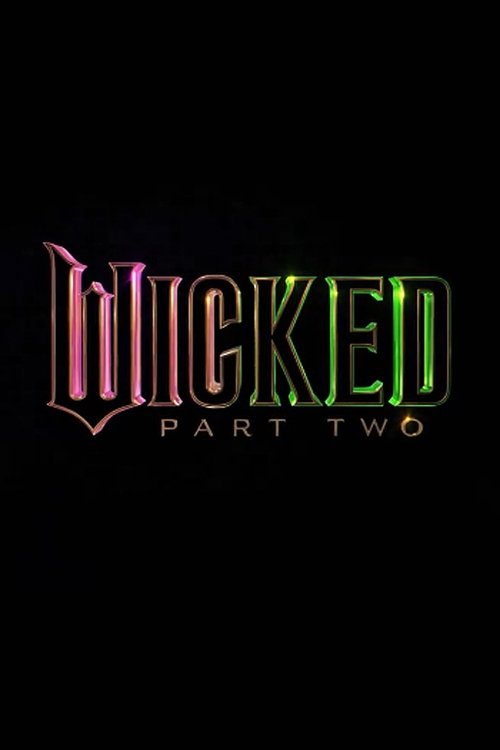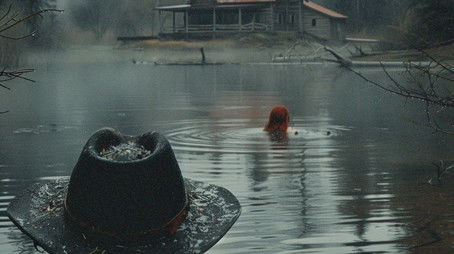
Ask Your Own Question
What is the plot?
In 1928, in the farming community of Earling, Iowa, a young woman named Emma Schmidt begins to experience a rapidly escalating series of disturbing phenomena. Her nights fill with violent nightmares; during the day she has sudden, aggressive outbursts and speaks in tongues she does not know. She recoils from crucifixes and sacramentals, and she develops an intense, inexplicable hatred for anything sacred in her family home. Her parents, devout Catholics who believe in the power and authority of the Church, interpret these occurrences as evidence that she is possessed. They petition local clergy for intervention and, ultimately, their plea reaches Father Theophilus Riesinger, a veteran Capuchin priest with a reputation for performing exorcisms.
Riesinger travels from his ministry to Iowa accompanied by Father Joseph Steiger, a younger priest who joins him reluctantly. Steiger arrives carrying personal wounds: he is haunted by the recent suicide of his brother, a fact that fuels his initial skepticism about demonic influence. He expects a medical or psychological explanation when he first meets Emma, but his reserve begins to erode the moment he observes her behavior in person. Emma, lodged in a room upstairs at the convent attached to the parish church, refuses to eat food that has been blessed; she gags and visibly recoils when offered bread and wine consecrated for Mass. When the ritual work begins, the environment in and around the convent responds: the air grows cold, the atmosphere becomes heavy, and the interior of the house seems to alter as if in opposition to the prayers.
Riesinger conducts the first stage of the ritual with calm determination. He speaks prayers, sprinkles holy water, and reads from rites established by the Church. Emma convulses repeatedly; her body jerks and contorts against the restraints the priests employ to keep her safe. Her voice fragments into multiple cadences during these sessions--sometimes mocking and harsh, sometimes eerily calm--and she alternates among languages that confuse the attending clerics. Over the course of the opening days she speaks in Latin in one moment, switches to German in another, then to Spanish and Aramaic. She vomits substances that the men and nuns cannot identify; the expulsions are profuse and inexplicable. At times she lifts from the bed, her body levitating above the mattress before she collapses back into convulsion. These manifestations intensify and become more violent, and the priests respond by escalating the prayers and rituals.
As the work proceeds, the afflicted reveals voices that claim to be specific unclean spirits. Emma's speech names Beelzebub among the presences, and she pronounces Judas Iscariot; she speaks in the voice of her dead father, a man who, she and others recall, abused her during his lifetime. Another presence identifies itself as the spirit of an aunt who was suspected locally of having practiced witchcraft. Riesinger treats each utterance as evidence of multiple entities occupying one person; he challenges them directly, invoking the name of Christ and the authority of the Church. Steiger, who initially conducts only the parish Masses and assists with liturgical duties, begins to find his skepticism shaken as he witnesses the persistence and specificity of the voices.
The convent community organizes the exorcisms into a structured sequence described by Riesinger as three principal stages spanning twenty-three days. In the early stage, prayer, interrogation, and doctrinal rites occupy the priests' attention. They bind Emma gently for safety and attempt to elicit the identities of the voices. In the intermediate stage the phenomena deepen: the vomiting increases in frequency, the levitations occur with greater force, and Emma produces speech in multiple ancient and modern tongues more fluently than expected. During these days the Mother superior monitors the toll that the continuous ritual work takes on the clergy and the nuns; she observes Steiger's face grow pallid and his hands tremble from fatigue and long hours. Steiger begins to wear a devotional medal to St. Michael that bears the St. Benedict medal on its reverse side, a physical sign of his involvement and his attempt to fortify himself against the supernatural assaults he witnesses.
Riesinger, who knew Emma when she was a child and who believes the case to be authentic, keeps an unrelenting pace as he conducts sessions of prayer and commands. He presses the presences for information and rebukes them aloud in the name of Christ. The voices respond by alternating between profanity, mockery of the priests, personal accusations, and false claims. They taunt Steiger about his brother's suicide and question Riesinger's authority, but the priests continue. During one intense session Emma lashes out, striking at the priests and thrashing her limbs so violently that the attending nuns must move quickly to secure her. When she speaks as her dead father, the words are detailed enough to strike the men with horror; she names private abuses and secrets that only someone close to the family could know.
By the time the ritual progresses to the third and most demanding stage, Riesinger announces that the final phase will require continuous work. For seventy-two uninterrupted hours the priests do not break from the rite. They take shifts of prayer, reading, and rebuke; they pour holy water, make the sign of the cross, and read aloud from liturgical texts. The convent volunteers to maintain constant vigil; nuns and lay assistants rotate to offer support and keep watch. Emma's body endures extended periods of terror: the convulsions become more severe, and at one point she bolts from the room and flees deeper into the church's lower spaces. She darts past the sacristy and into the catacombs beneath the convent--the cool, narrow passages where relics and old graves are stored. The priests and two nuns chase after her through the narrow corridors; their steps echo against stone as they call her name, shouting prayers.
When they find Emma in the catacombs she is crouched near a tomb, her face contorted and her eyes rolling. Riesinger approaches and speaks directly to the spirits he believes control her, demanding obedience to the authority of Christ. Steiger stands beside him and, casting aside earlier reserve, raises his voice to join the command. The presences respond with a storm of vocalizations coming through Emma's throat: they call themselves by the names previously spoken and attempt to mock and confuse the men. The priests repeat the exorcism formulas, instructing the spirits to depart. Nuns in the upper chapel and throughout the convent join in synchronous prayer when word of the struggle passes back to them; their voices rise, adding pressure from without. During this confrontation a few beads of blood appear on Emma's lips and she briefly becomes still, as if the presences falter under the combined force of the ritual and the community's prayer.
Riesinger insists the spirits must obey Christ alone. He presses with greater intensity--stern words in Latin and German--until, after sustained pressure and multiple commands to leave the body, the manifestations change. Emma shudders violently and emits a prolonged, animalistic cry; then a long exhalation passes from her lungs. Her eyes, previously rolled or clouded, open and find the faces of the priests and nuns above her. She blinks; the convulsions cease. Those present hold their breath as silence replaces the cacophony. Riesinger pronounces that the demons have been cast out. He completes the liturgical gestures that conclude the rite, and the attendants fold their hands.
In the days that follow Emma returns to a composed physical state. Her appetite normalizes, she sleeps without the night terrors, and she no longer spits out unidentifiable substances. She apologizes to those she injured and resumes routine tasks within the community. The convent staff and parishioners document the events and share accounts with diocesan authorities. The story spreads; Father Theophilus Riesinger is interviewed and appears in local media as a result of the extraordinary case. Father Joseph Steiger, whose initial skepticism gave way to full participation in the rites, keeps a record of the proceedings in a journal. His entries describe the sequences of the ritual, the responses of the afflicted, and his internal shifts from doubt to conviction. Those journals are later made available to scholars and clerical reviewers who study the case.
The film concludes with scenes of the aftermath: Emma assimilates back into daily life in Earling; she attends Mass without incident and participates in family and community activities. Riesinger returns to his ministry, acknowledged publicly for his role in the exorcism. Steiger continues his priestly duties as well, but the experience leaves an indelible mark on him; his journal entries remain a record of the events for ecclesiastical examination. The narrative ends with the notation that Emma's deliverance from the multiple unclean spirits is complete, and that the principal actors--Riesinger and Steiger--have their roles documented and their involvement subjected to later scrutiny and study. The immediate crisis resolves with Emma alive, the priests and nuns intact, and the convent restored to its ordinary routines after the final prayers are said. The film closes on the restored quiet of the Earling parish as life resumes its ordinary rhythms.
What is the ending?
The ending of The Ritual (2025) shows the culmination of a grueling 23-day exorcism performed by priests Theophilus Riesinger and Joseph Steiger on a young woman named Emma Schmidt. After intense physical and spiritual struggle, Emma breaks free from her restraints, levitates, then collapses lifelessly. Moments later, she opens her eyes, signaling the exorcism's completion. Emma returns to a normal life, though rumors persist that the demons occasionally returned. Riesinger is deeply changed by the ordeal, while Steiger finds peace and documents the experience in a journal, uncertain if it was divine or psychological but certain it transformed him forever.
The ending unfolds over the final, most intense stage of the exorcism, which lasts 72 continuous hours. The scene opens with the two priests, Riesinger and Steiger, exhausted but resolute, continuing their prayers and rituals with unwavering intensity. Riesinger is obsessively praying, barely eating or sleeping, while Steiger, initially hesitant, commits fully to the ritual.
They demand the names of the spirits tormenting Emma and force them to swear obedience to Christ. Emma, bound to the bed, convulses violently, vomiting strange substances and speaking in multiple languages including Latin, German, Spanish, and Aramaic. Her body contorts in unnatural ways, and the physical toll on the priests is immense--Steiger begins to break down emotionally, while Riesinger's faith hardens.
At the ritual's peak, Emma suddenly breaks free from her restraints. She hovers above the bed, suspended in midair, her body limp and lifeless. Then, she crashes down onto the bed, motionless. The room falls silent. After a tense moment, Emma's eyes open, clear and calm, signaling that the possession has ended.
In the aftermath, Emma resumes a normal life, though whispers remain that the demons occasionally returned over the years. Riesinger, though victorious, appears deeply altered by the experience, his demeanor more somber and haunted. Steiger, who had struggled with grief and doubt throughout, finds a newfound peace. He writes a journal detailing the exorcism, reflecting on whether what he witnessed was divine intervention or psychological phenomena, but acknowledging that the ordeal changed him profoundly.
This final sequence emphasizes the physical and spiritual exhaustion endured by all involved, the intense battle between faith and darkness, and the ambiguous nature of the supernatural events witnessed. The film closes on a note of cautious hope mixed with lingering uncertainty about the true nature of Emma's possession and the cost of confronting such evil.
Who dies?
Yes, in the 2025 film The Ritual, one character dies: Emma Schmidt. During the climactic exorcism ritual, which lasts 72 continuous hours, Emma breaks free from her bindings, hovers above the bed, and then crashes down, appearing lifeless. However, she then opens her eyes, indicating the exorcism is complete and she has survived the ordeal.
No other character deaths are described in the available information. The film focuses on the intense and violent exorcism process conducted by priests Theophilus Riesinger and Joseph Steiger to save Emma from possession. The physical and psychological toll on the priests is immense, but they survive the ordeal. Emma's apparent death and revival mark the ritual's peak and resolution.
In summary:
| Character | Circumstances of Death | Why | When | How | |-----------|-----------------------|-----|------|-----| | Emma Schmidt | Appears lifeless after crashing down during final exorcism stage | Result of violent exorcism ritual to expel demons | During the final 72-hour stage of the exorcism | Breaks free from bindings, hovers, then crashes down |
Emma's death is temporary and part of the ritual's climax, after which she revives and returns to normal life, though with lingering whispers of occasional demonic returns.
Is there a post-credit scene?
The 2025 horror film The Ritual does not have any information indicating the presence of a post-credits scene. The detailed plot summary and ending description focus on the intense exorcism performed by priests Theophilus Riesinger (Al Pacino) and Joseph Steiger (Dan Stevens) on a possessed young woman, Emma Schmidt (Abigail Cowen), culminating in her apparent liberation from demonic possession and the priests' personal transformations. No mention is made of any post-credits or additional scenes following the main narrative.
Other horror films from 2025, such as Bring Her Back, are explicitly noted to have no post- or mid-credits scenes, suggesting that this is a common practice for some recent horror releases. Given the absence of any reference to a post-credits scene in the available sources for The Ritual (2025), it is reasonable to conclude that the film does not include one.
What is the setting of the movie The Ritual?
The movie The Ritual is set in the small farming town of Earling, Iowa, in 1928. It primarily takes place in a convent where the exorcism of Emma Schmidt occurs.
How does Emma Schmidt's behavior change during the exorcism rituals?
During the rituals, Emma Schmidt exhibits supernatural behaviors such as levitation, speaking in multiple languages like Latin, German, Spanish, and Aramaic, and vomiting strange substances. Her body contorts in impossible ways, indicating a severe struggle with the entities possessing her.
What is the relationship between the two priests, Theophilus Riesinger and Joseph Steiger?
The two priests, Theophilus Riesinger and Joseph Steiger, initially have differences but come together to perform the exorcism. Riesinger is driven by his past and becomes increasingly obsessed with the ritual, while Steiger is questioning his faith but finds renewed purpose in helping Emma.
How does Father Steiger interact with Emma during the rituals?
Father Steiger shows compassion towards Emma, initially refusing restraints during the ritual out of concern for her well-being. He also confides in her during rare lucid moments, which helps him find a renewed sense of purpose.
What are some of the supernatural events witnessed during the exorcism?
Witnesses report seeing Emma levitate, hearing unearthly voices, and observing supernatural strength. These events are part of the intense and terrifying exorcism rituals conducted by the priests.
Is this family friendly?
The 2025 movie The Ritual is not family friendly and contains content that may be upsetting for children or sensitive viewers. It includes moderate violence and gore, moderate frightening and intense scenes, and mild sexual content and nudity. Specific potentially objectionable aspects include:
- A scene showing a girl naked with bruises, which, although not explicit, can be disturbing.
- A scene where a girl touches a priest in a sexual manner, though she is not naked.
- Moderate violence and gore related to the exorcism process.
- Frightening scenes involving possession, including a scene where the girl flies up and speaks ominously.
- Mild profanity, including one use of the F-word.
- No alcohol, drugs, or smoking depicted.
These elements suggest the film is intended for mature audiences and may be distressing for children or those sensitive to horror, supernatural themes, and intense religious rituals.

